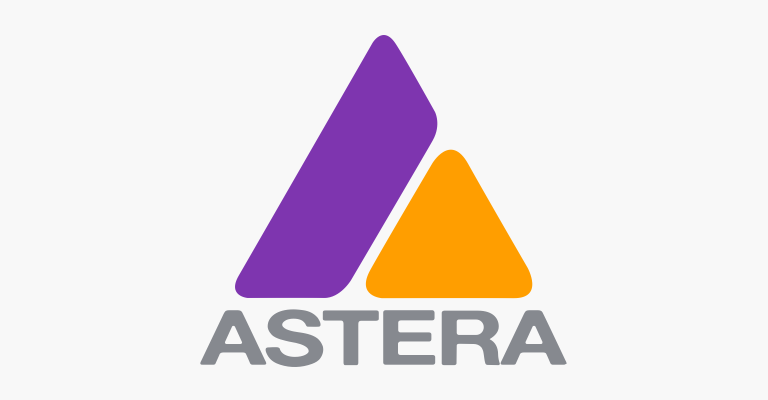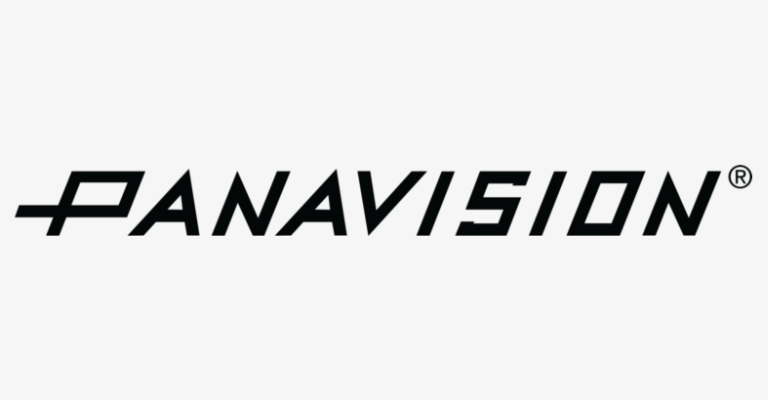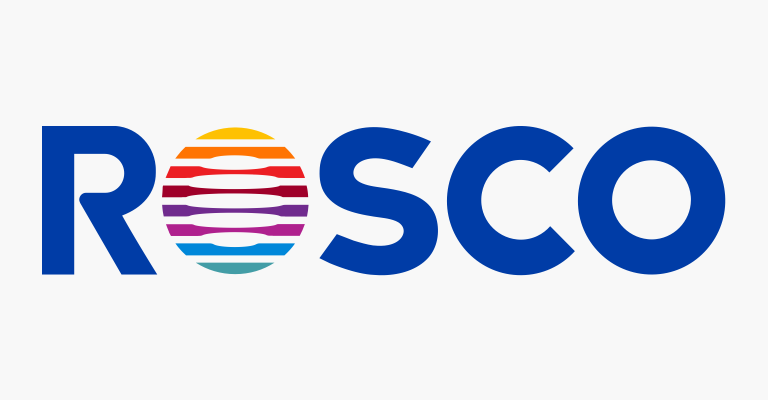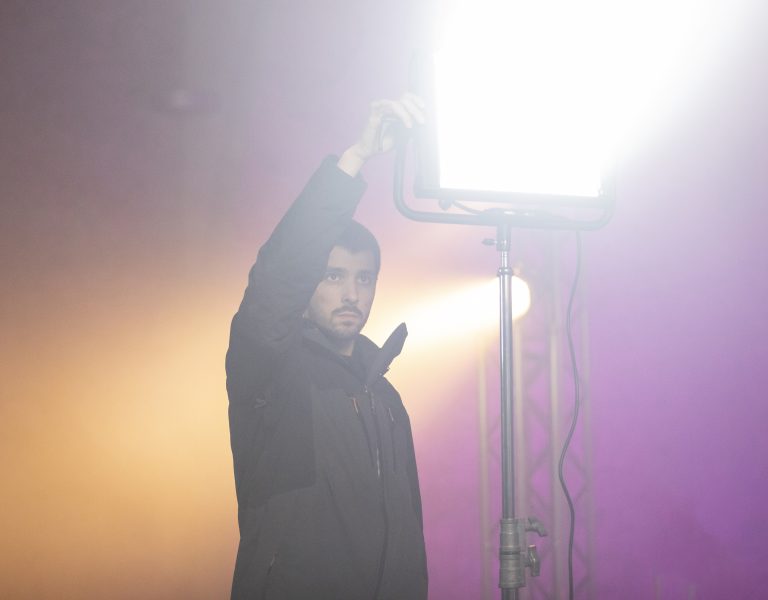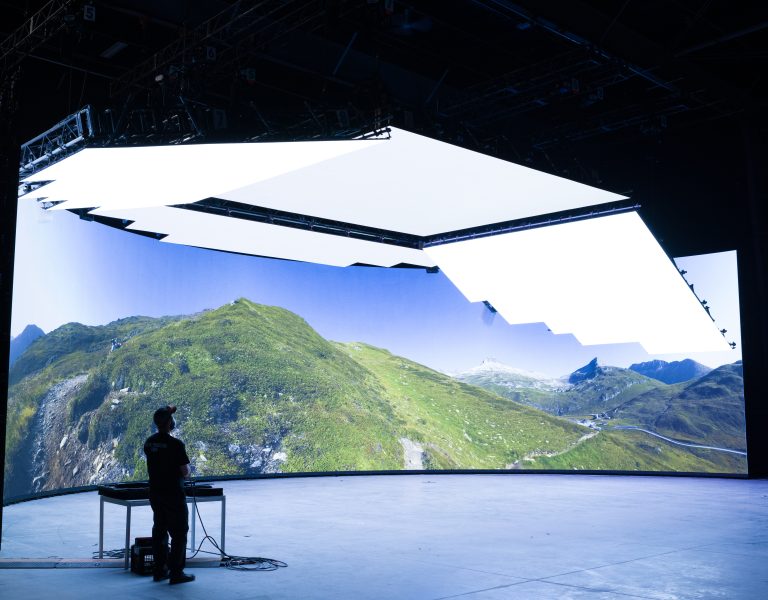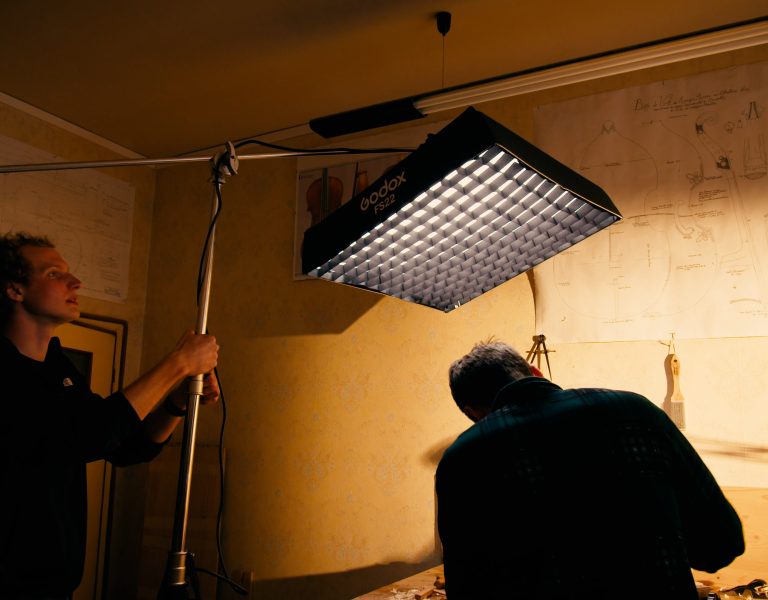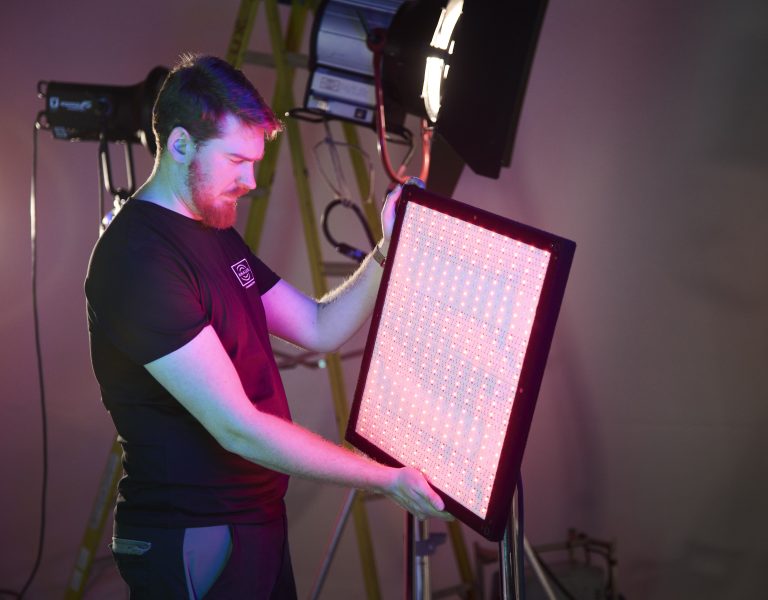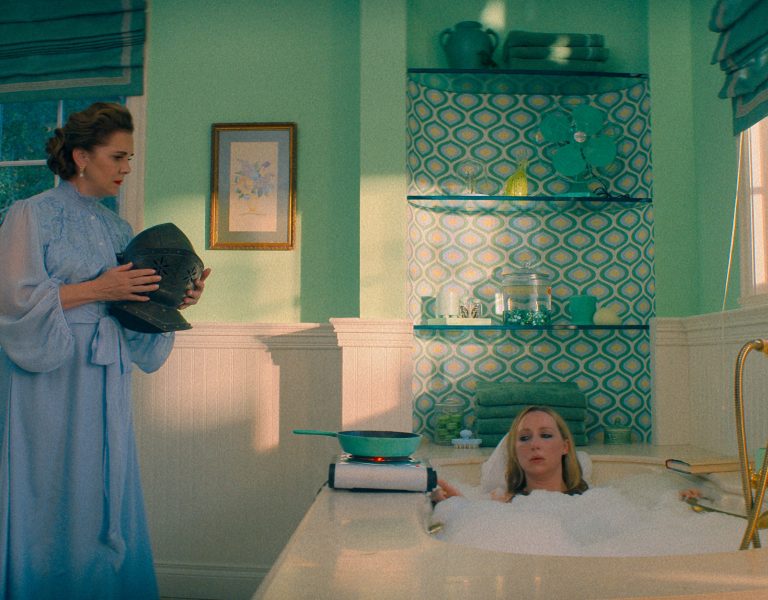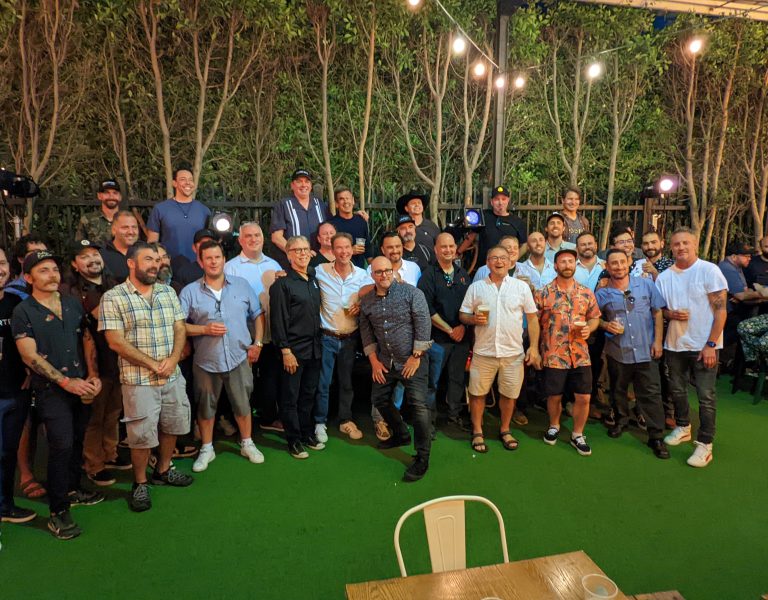BRIGHT AND BEAUTIFUL
Production name: Dope Queens
Production type: Narrative feature
Cinematographer: Madeline Leach
Chief lighting technician (CLT): Mina Stollery
Director: Grafton Doyle
Overview of Dope Queens and your approach to lighting: Dope Queens follows three friends over the course of one wild night on the famously gritty streets of San Francisco’s Tenderloin district.
Madeline and I agreed that we wanted the lighting of the locations, especially the characters’ apartment, to mirror their emotional journey as the night progresses. At the beginning, the characters are optimistic about what the future holds for them, so the approach to lighting their apartment was focused on making the space bright, airy, and soft. As the night unfolds, we started to push harder sources in through the windows, tinged with green, to make the apartment feel cramped, and dirty.
Working with Madeline: When I first met Maddie, we immediately had a connection. I was already familiar and impressed with her work on the short film Pony Boi and was eager to work with her. Our approaches to lighting a film are both very collaborative so we were able to bounce ideas off one another and build from there. Our visual references for this film were pulled from Tangerine, Good Times, Spring Breakers, and The Neon Demon.
Lighting kit used and why it was chosen: Most of our lighting kit was made up of LiteMat Spectrums, Astera Titans, Helios, and Nyx bulbs. The film has many scenes taking place in seedy clubs and dance floors, so we needed RGB fixtures that were also wirelessly DMX-able so we could programme effects and save looks. Unfortunately, due to budget, we were not able to leave locations rigged, so the ability to return to our exact levels was a lifesaver.
Lighting kit supplied by: The Little Giant Lighting and Grip (San Francisco).
Camera and lenses used: The ARRI Alexa Mini and Hawk B Speeds Anamorphic lenses from Otto Nemenz.
Lighting equipment testing process: Our prep time was extremely limited, but we discussed the particular colour palettes for each location. We spent some time early on building out a variety of colour palettes for our fixtures which were then saved into our Blackout show file and transferred into ETC Nomad for some of bigger dance club scenes that need more robust effects.
Lighting challenges faced: Time was our biggest challenge. We didn’t have a rigging crew and only had a small grip and electric department. I relied heavily on my ACLT, Xavier Gomez, to work ahead in other locations to minimise our setup time. Our key grip, Juan Ruiz, and his best boy grip, Patrick Walsh, helped tremendously by pre-rigging points in the ceilings and building small grids, so that any units we needed to add to the scene could be placed quickly and be hidden out of frame.
Trickiest location to light: The nightclub scenes took place at the former Divas Night Club and Bar in San Francisco, California’s only transgender nightclub. The viewers’ first introduction to the space is a long Steadicam shot (from Steadicam operator Mike Chan) that starts outside on the street and follows our protagonists into the building. We had to light two floors of the building because all of it would be seen during the tracking shot, and we had about a day to do it. Due to budget, most of the gear needed was being used on another set located down the street. Fortunately, as we finished other scenes, I was able to send gear ahead so my ACLT could begin lighting the location. We had a few extra hands to help us run our LiteRibbon for the practical stairway lighting as well as run data and receivers to all the fixtures that needed it.
Lighting lessons: Dope Queens was the first feature where I was the CLT. Previously, I’d worked mainly as an ACLT, so I was used to executing a lighting plan and delegating labour to make the plan happen. Stepping into the role of CLT added new responsibilities which strengthened my communication and delegation skills.



